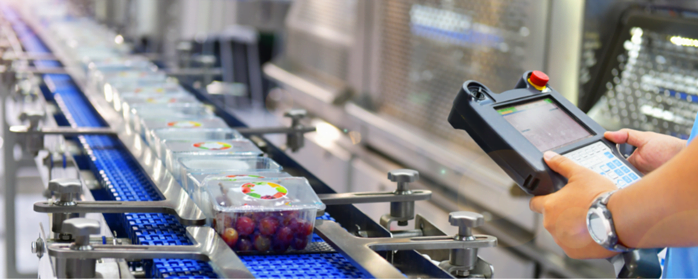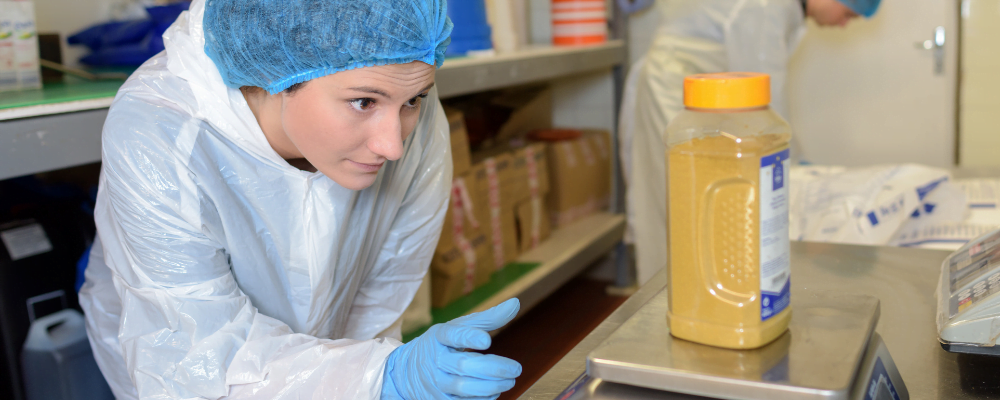A recent report conducted by LNS Research highlights the criticality of data for continuous improvement in production. For data to support positive change, it must be ‘highly organised and readily available to produce the desired results’1. How weighing data is collected, shared, and analysed can support this process. We look at potential gaps in this end-to-end process and the weighing solutions that can help you uncover crucial data to drive continuous improvement.
How gaps occur and their impact on continuous improvement
The timing of when weighing data is collected, how it’s structured and utilised can have a significant bearing on how meaningful and accessible it is. The lack of usable data can ultimately impede root cause analysis as well as your ability to optimise processes. Common pitfalls that lead to data gaps within a production setting include:
- No/ limited data capture at critical points
Not collecting data or enough data at critical points can lead to missed opportunities to generate insight that can improve quality, traceability, productivity, and yield. Scenarios can range from:
- No weights validation at Goods In leading to out-of-spec products and rejections downstream
- Not recording operator weighing errors resulting in reoccurring mistakes and lost production time
- Not compiling holistic data sets that include the weighing date, time, batch number, weight, and operator ID, which can hinder compliance and lead to prolonged investigations
- Lack of real-time data collection
Access to real-time data is essential for prompt identification and diagnosis of problems across weighing processes. Retrospectivity, collecting data could result in recording errors and misinformed decisions that impact negatively against your goals.
- Fragmented or disjointed data
Unstandardised data formats and disjointed databases hinder accessibility and data mining. Consequently, data that takes days or even weeks to retrieve and evaluate can render your initial analysis out of date.
- Transparency of data
According to Industry Week, just over one-third of manufacturers claim that data within their department is widely available2. This low figure would mean most departments in organisations are not recognising the value of their data internally, preventing operators from making improvements to essential processes. So, while it’s important for the correct data to be collected and stored properly, it’s just as important that the appropriate people have access to the right data to make crucial business decisions.
Identifying data gaps within your weighing processes
Unless your departments and production processes are streamlined, it can be challenging to establish where data gaps exist and how valuable the data would be in driving continuous improvement. To facilitate the process, a good starting point should take the following questions into consideration. If you answer yes to any, data gaps may exist within your weighing processes and further internal reviews should be triggered.
- Is weighing data accessible for all up and downstream weighing processes?
Is data being collected from Goods In to Goods Out to support full end-to-end traceability?
- Is real-time decision making a pain point?
Are you able to view data in real-time to prevent issues from escalating or to make immediate improvements?
- Is your data infrastructure a challenge?
Does your weighing data require reformatting and joining before analysis can take place?
- Is cross-functional decision making possible?
Can data be accessed and shared between relevant teams to reduce siloed decision making?
Weighing solutions that support continuous improvement
Weighing data can present a wealth of opportunities but can also become a bugbear when not captured and warehoused correctly and efficiently. The good news is that weighing technologies continue to evolve and work smarter to help bridge the gaps. Consequently, helping to drive continuous improvements without the need for arduous human intervention.
- Powerful hardware solutions for critical data capture
- Platform scales, such as the AWM VWSLT Lift Top Weighing Platform, can be used to validate the weight of materials at Goods In. These solutions help to safeguard against non-compliance further downstream and optimises yield.
- Balances, like the Ohaus Explorer®, with user login options, allow managers to monitor operator errors, which help to identify training requirements and improve overall efficiency.
- Scales and balances with comprehensive data capturing options (including date, time, weight, operator, balance make and model), for example, the Sartorius Cubis® II enables critical data to be captured for compliance and traceability.
- Smart software solutions for real-time data capture, transparency, and analysis
Minebea Intec’s StatisticalProcessControl@Enterprise centralised data management offers the capability to integrate existing ERP or MES Systems, which is ideal for streamlining and standardising data for cross-departmental access. Its capacity to provide real-time data reduces response times, enables immediate intervention to mitigate against unexpected downtime.
The Sartorius Cubis® II with QApps is ideal for the laboratory environment. With applications such as user management, electronic signatures, and an audit trail this fully customisable package can eliminate potential gaps in data records and ensure full traceability. While data can be reviewed and analysed, via printouts or bespoke PC Software, to reveal patterns and trends.
As manufacturers face increasing challenges to enhance productivity and efficiencies, making informed decisions based on meaningful and accessible data will be key to driving innovation and continuous improvement. If quality and efficiencies are critical to your processes, taking the first steps to determine whether weighing data gaps exist in your processes and understanding how technology solutions can close them will spearhead you ahead of your competition. For personalised support on how to identify and tackle data gaps in your weighing processes, contact our regional weighing experts for complimentary advice.
Sources
1 Sacra, D (2021) ‘Digital Continuous Improvement Can Deliver the Promise of Industrial Transformation’ [Online] Available at https://www.automationworld.com/process/iiot/article/21545122/digital-continuous-improvement-can-deliver-the-promise-of-industrial-transformation (Accessed 12th August 2021)
2 Immerman, D (2021) ‘Too Often, the Right Data Isn’t Getting to the Right Person (Even within Their Own Team)’ [Online] Available at https://www.industryweek.com/technology-and-iiot/digital-tools/article/21171578/too-often-the-right-data-isnt-getting-to-the-right-person-even-within-their-own-team (Accessed 12th August 2021)





